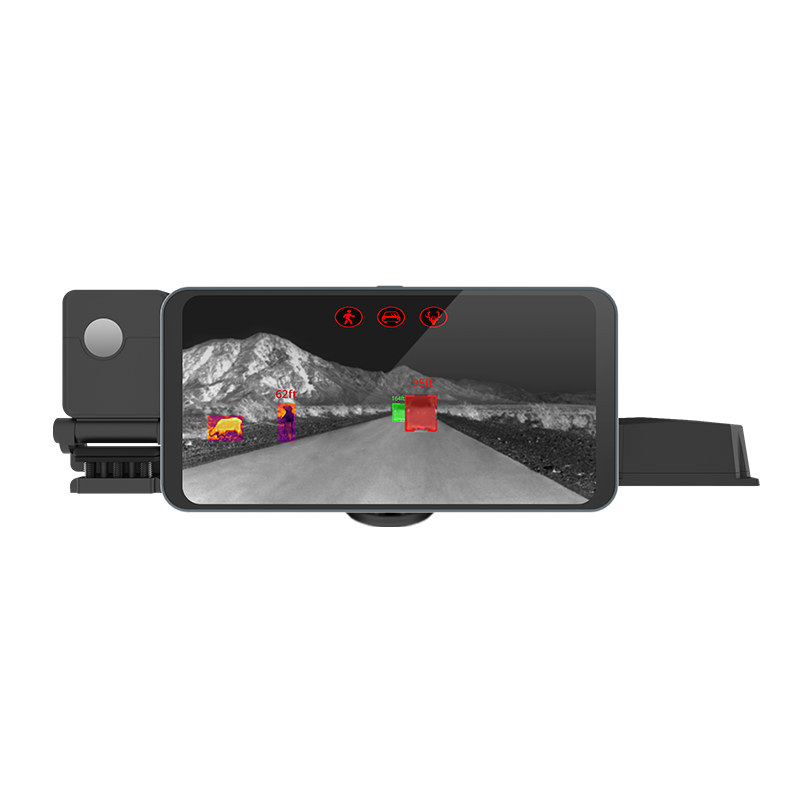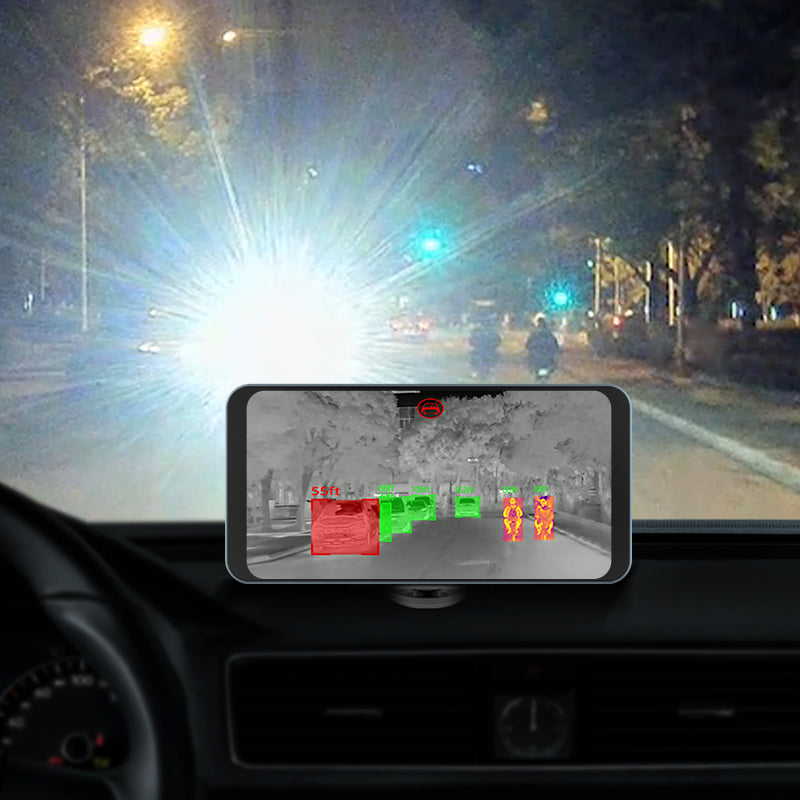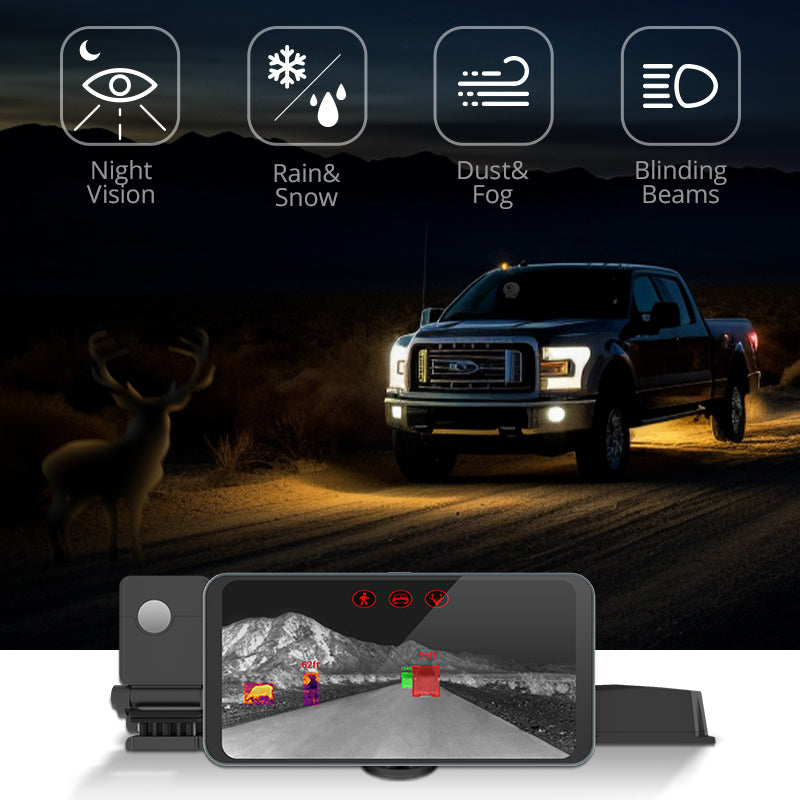Can You Add Night Vision to a Car? Here’s How to Drive Safer at Night
If you’ve ever driven on a dark, foggy road or struggled to see through heavy rain, you’ve probably wished your car had night vision. The good news? Yes, you can add night vision to a car—and it’s easier than you think. Modern aftermarket technology like the Robofinity Thermal Imaging Night Vision System makes it possible to upgrade almost any vehicle with cutting-edge safety features. In this guide, we’ll break down how night vision works, why it’s worth the investment, and how products like Robofinity can transform your nighttime driving experience.
Why Night Vision for Cars Matters
Let’s face it: driving at night is risky. According to the National Highway Traffic Safety Administration (NHTSA), fatal crashes are three times more likely at night. Poor visibility from darkness, glare, or bad weather plays a huge role. Standard headlights only illuminate about 250–300 feet ahead, but at 60 mph, you need at least 400 feet to react to hazards. That’s where adding night vision to a car becomes a game-changer.
Night vision systems use thermal imaging or infrared cameras to detect objects far beyond what your eyes—or headlights—can see. They spot pedestrians, animals, and obstacles in total darkness, fog, or storms, giving you extra reaction time. For drivers in rural areas (think deer crossings) or anyone commuting in tough weather, this tech isn’t just cool—it’s lifesaving.

How Does Night Vision Work in Cars?
Most factory-installed night vision systems (found in luxury brands like BMW or Mercedes) use thermal cameras to detect heat signatures. These systems display a live feed on your dashboard, highlighting people, animals, and vehicles. The downside? They cost thousands and are only available on high-end models.
But here’s the good news: you can add night vision to a car affordably with aftermarket kits. The Robofinity Thermal Imaging Night Vision System, for example, brings premium features to everyday drivers. Let’s dive into how it works:
1. Thermal Cameras: Detect heat from living beings (like deer or pedestrians) and display them on a screen.
2. AI Alerts: Smart software identifies threats and sends warnings.
3. All-Weather Performance: Works in rain, fog, snow, and even sandstorms.

Meet Robofinity: The Affordable Night Vision Upgrade
If you’re looking to add night vision to a car without breaking the bank, the Robofinity Thermal Imaging Night Vision System is a top pick. Priced at $519, it’s a fraction of the cost of factory options and works with most vehicles. Here’s why drivers love it:
Key Features of Robofinity:
- Universal Fit: Compatible with sedans, trucks, SUVs, and even RVs.
- Crystal-Clear Night Vision: See up to 656 feet in total darkness.
- AI-Powered Detection: Recognizes animals (deer, kangaroos, cougars), pedestrians, and vehicles.
- Collision Alerts: Beeps and flashes warnings if a hazard is detected.
- All-Weather Reliability: Tackles glare, fog, rain, snow, and dust.
One customer, Sarah from Colorado, shared: “I drive mountain roads daily, and Robofinity’s animal alerts have saved me from hitting deer twice this winter. Best $500 I’ve ever spent.”
How to Add Night Vision to Your Car in 3 Steps
Worried about complicated installations? Don’t be. Adding night vision to your car is simpler than installing a backup camera. Here’s how it works with Robofinity:
1. Mount the Camera: Attach the thermal camera to your grille or bumper (no drilling required).
2. Connect to Power: Plug into your car’s 12V outlet or fuse box.
3. Set Up the Display: Mount the 6.25-inch screen on your dashboard or windshield.
Total time: Under 30 minutes. No coding or dealership visits needed.

Why Choose Thermal Imaging Over Regular Cameras?
You might wonder: Can’t I just use a dashcam with night mode? While dashcams record footage, they don’t actively scan for dangers. Thermal imaging, like Robofinity’s system, sees through visual barriers. For example:
- Headlight Glare: Ever been blinded by oncoming traffic? Thermal cameras ignore bright lights.
- Fog/Snow: Unlike regular cameras, thermal tech detects heat through obscuring weather.
- Hidden Hazards: Spot a pedestrian in dark clothing long before your headlights catch them.
Night Vision Isn’t Just for Luxury Cars Anymore
Gone are the days when adding night vision to a car meant buying a $70,000 SUV. With aftermarket kits like Robofinity, even a 10-year-old Honda can get military-grade safety tech. At $519, it’s cheaper than a single insurance deductible for a collision with a deer.

FAQs About Adding Night Vision to Cars
Q: Will this work on my truck?
A: Robofinity fits 99% of vehicles, including trucks, SUVs, and hybrids.
Q: Does it drain my battery?
A: No—it uses less power than a phone charger.
Q: Can I use it during the day?
A: Yes! The collision alerts work 24/7.
Final Thoughts: Night Vision Is a Smart Investment
Adding night vision to a car isn’t just about convenience—it’s about safety. Whether you’re navigating unlit backroads or battling a snowstorm, systems like Robofinity give you peace of mind. For $519, you’re not just buying a gadget; you’re investing in your family’s safety and avoiding costly accidents.
Ready to see the road like never before? Check out Robofinity’s website and join the thousands of drivers who’ve upgraded their rides with night vision. After all, when it comes to nighttime driving, seeing is believing—and surviving.
Robofinity Thermal Imaging Night Vision System – Drive safer, day or night. Price: $519. Free shipping in the U.S.




Commenta
Nota che i commenti devono essere approvati prima di essere pubblicati.
Questo sito è protetto da hCaptcha e applica le Norme sulla privacy e i Termini di servizio di hCaptcha.